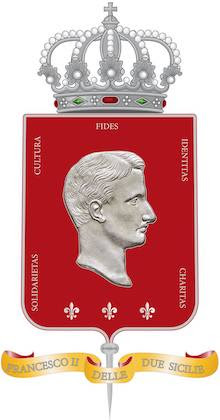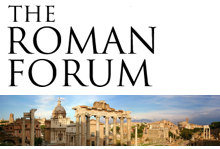Guest Op-Ed
Professor Gabriella Paduano
Submitted by Erasmo Russo
Congratulations to proud Molisan native Professor Gabriella Paduano on her latest presentation of her groundbreaking biography on the life and work of 19th-century Constantinian knight Dr. Pietro Ramaglia of Ripabottini, Molise. Dr. Gabriella Paduano, a friend of the Two Sicilies community and the Sacred Military Constantinian Order of St. George (SMOCSG), has also published an important work on the history and patronage of the noble Francone family of the Molise and is a recipient of the SMOCSG’s Attestation of Merit, granted to her on 6 January 2025 in Campobasso, for her generous philanthropy and for self-financing her own archival research and the publication of books relating to Two Sicilies history.
On the 21 March, the Movimento Neoborbonico, Comitati delle Due Sicilie, and various southern groups held the traditional gathering in the city of Gaeta to honor the fallen soldiers and populace of the Kingdom who took their heroic last stand at the final siege there and the subsequent exile of King Francis II, marking the end of centuries of the independence of the nation in 1861. The event was a true immersion in history, with two days of presentations and ceremonies attended by hundreds of visitors from around Italy. The events included book presentations, Neapolitan language classes, guided tours, historical reenactments, a flag raising, and a symposium on the figure of King Francis II between kingship and sainthood (the canonization process has begun).
The legacy of Cav. Dr. Pietro Ramaglia as an exemplar of hard work and giving back is augmented by the backdrop of the Two Sicilies history. A pious and loyal man, Ramaglia resigned his posts after the ongoing occupation of Naples, despite being offered continued tenure at the Medical School under the new regime. The son of industrious farmers and shopkeepers in Molise, Ramaglia excelled as a young student and was able to study medicine thanks to a royal scholarship he earned. He maintained his integrity and looked after his compatriots in need as he witnessed the tumultuous fall of his country. Thanks to the efforts of a new generation of scholars such as Professor Paduano, whose own ancestors hail from Ramaglia’s hometown, a wider public now has access to this Two Sicilies story, debunking old Risorgimento tropes of a repressive and backward nation which needed to be annexed and improved by conquest. Ramaglia’s story vividly highlights the interaction between the capital and the regions of the Kingdom and the nation’s investment in its people and well-being.











